The 2024 House Elections Present a Very Odd Vision of Democracy
Does your vote matter? Thanks to our antiquated system of single-winner districts, the answer is probably: NO. Here’s why. PLUS: how to fix it to make your vote matter in the future.
The 2024 House Election is shaping up to be a very strange version of electoral democracy. Once again, the outcome will hinge on the mere 10% of House seats that are realistically competitive (As of this writing, that’s 22 or so toss-up districts and an additional 22 that lean slightly to one party or another.)
Given the close balance of power in Washington and continued litigation over district maps, the courts may very well wind up being more important than voters in this election.
All in all, it represents a very weird take on the idea of a “People’s House” in a representative democracy.
So odd thing #1: Only ten percent or so of districts are competitive. (Only 5% are currently rated as true toss-ups). In most districts, the outcome seems predetermined. Yet, nationally, the margin of victory is likely to be very narrow. So, very little local competition, but super-tight national competition.
This decline has been consistent for decades.1 Below I document the recent decline. But others have documented a steady decline in competitive House elections that goes back to 1872!
This takes us to odd thing #2: With so few competitive districts, the election's outcome relies as much on judicial decisions regarding state and federal court district maps as on the voters themselves. The district maps that will be in effect this November are the result of extensive litigation. Weird, right? — judges are deciding the outcome of the election? They probably also decided the outcome of the 2022 mid-term, which was also super-close (with only 10 percent of seats reasonably competitive.)
Here’s the succinct headline that captures this dynamic well: "US House: Court fights could tip control in 2024”. With a clear first paragraph:
“Legal battles over redistricting could lead to new congressional maps for the 2024 election in more than half a dozen U.S. states, potentially flipping control of the U.S. House of Representatives, which currently has a 219-212 Republican majority with four vacancies.
In the intensely competitive and deeply partisan landscape of American politics, the maps are crucial. The same voters, voting in identical numbers for the same candidates, could see a different party in control of Congress, depending on the map.
These legal battles have gone on nonstop for years. Since the 2020 Census, congressional redistricting lawsuits have been filed in 23 states, challenging maps that elect a total of 260 U.S. Representatives (60 percent of the U.S. House). Not all were successful. But most have forced at least some changes to the original maps. Following the 2022 election, eight states have been forced to redraw congressional maps. In two very significant states — New York and Florida — the 2024 maps are still pending.
What if we did it under different maps? We’d get very different results
Imagine the House election as a multiverse of possibilities, shaped by the maps used.
In the latest decennial redistricting, following the 2020 census, numerous maps were proposed, yet only a few were adopted. Some maps tilted in favor of Democrats, others favored Republicans, and a few increased the competitiveness of districts.
The analysts at FiveThirtyEight undertook a comprehensive review of all 365 potential congressional maps suggested during the 2022 redistricting cycle. They explored differing scenarios: What if the maps had been tailored to be maximally favorable to Democrats? Or to Republicans? And what if they were designed to enhance competitiveness?
The same set of voters could produce different election results simply by altering district boundaries? It’s like magic – redraw the lines, and Presto Change-O! A different party is in charge of the US Congress!
Maybe a silly game I just made up might help you to understand the stupidity of our electoral system
Here’s another way to think about it.
Imagine a simple and very silly game, which I’ll call “Buckets”
Here’s how it works: There are 9 buckets, and two players. Each bucket can hold 21 tokens. Each player gets 90 tokens. There are also 9 “mystery” tokens, one for each bucket (the color of these tokens will only be revealed at the conclusion of the game).
The goal of the game is to win more buckets than your opponent. You win a bucket by having more tokens in the bucket than the other person. So, for example, if you pick red, and your opponent picks blue, and a bucket has 12 red tokens and 9 blue tokens, you win that bucket.
One player goes first. That player gets to allocate her tokens across all 9 buckets.
Player 1 will always win if she follows this simple strategy: Pick six buckets, and place 15 of your tokens in each. Now you’ve just won six buckets, guaranteed. You’ll win the game 6-3.
Player 1 could even win seven buckets, by putting 13 tokens in six of the buckets, and 12 in one.
Or she could get really nasty, and try to win eight buckets, by putting 11 tokens in 6 buckets, and 12 in two buckets.
Player Two’s only response would be “that’s not fair!”
To which Player One could respond: “well, fair or not, those are the rules of the game!”
This game of “buckets” sure seems like a pretty stupid game.
It is, of course, a thinly veiled and slightly over-simplified analogy for districting for US congressional elections. And what we call “gerrymandering” is essentially that same winning strategy: forcing the other player to “waste” all their tokens (voters) in just a few buckets (districts), while spreading yours out more evenly. The mystery tokens symbolize the roughly five percent of voters who are genuinely undecided.
Since each district is a separate election, winning is not about getting the most votes overall, but about distributing your votes more “efficiently” to win the most districts.
But back to “Buckets” for a second. What would a “fair” distribution of tokens look like?
Would it be fair for all nine buckets (districts) to have 10 red tokens, 10 blue tokens, and one mystery token? That is, to have all nine districts perfectly competitive?
Maybe. But, what red gets lucky, and most of the mystery tokens (swing voters) go red? Then the Red team might win 7 out of 9 districts.
Would it be fairer to guarantee four red buckets, four blue buckets, and one mystery bucket? This means there will be no disproportional 7-2 landslide. But… then we wind up with 8 “safe” buckets/districts, where the election is a foregone conclusion.
Gerrymandering is bad. Let’s fight it in the courts! (say the lawyers)
Unlike the simplistic "buckets" game, real-world districting is complex because voters aren't mere tokens. They have homes and live in places! But the logic is the same: draw districts to more evenly distribute your voters, and cram more of their voters into fewer districts.
There are many, many different ways to draw district lines, especially with today’s geo-mapping computer software and predictable partisan voting. A simple click of a “run” button generates thousands upon thousands of possible district maps, each with predicted partisan outcomes.
So: Why not draw the lines to help your party?
“I think electing Republicans is better than electing Democrats. So, I drew this map to help foster what I think is better for the country.” That’s a direct quote from Rep. David Lewis, a Republican member of the North Carolina general assembly’s redistricting committee.
He went on: “I propose that we draw the maps to give a partisan advantage to 10 Republicans and three Democrats, because I do not believe it’s possible to draw a map with 11 Republicans and two Democrats.” Give the man some credit. He knows how to play the game of Buckets.
However, the ability of the David Lewises of the world to manipulate district boundaries is not unlimited. State constitutions impose certain restrictions on how aggressively lawmakers can re-bucket the electorate.
A recent Democracy Docket report tracked more than 100 (111, to be exact) lawsuits challenging state legislative and congressional maps enacted following the 2020 census. Buckets upon buckets of litigation, really.
Most litigation is in state supreme courts, since the Supreme Court of the United States decided in 2019 that partisan gerrymandering was constitutional, up to legislatures and states to regulate.
The most effective federal litigation tool is Section 2 of the Voting Rights Act. It still places limits on racial gerrymanders that dilute the voting power of minority constituencies. Litigators have used these tools widely.
However, the future of Section 2 is uncertain. Many expected the Supreme Court to significantly weaken it last year. Instead, the court surprised most election law experts in siding with the plaintiffs in the Alabama racial gerrymandering case, Allen v. Milligan. As a result, Alabama was forced to redraw its maps, to create two Black-majority districts (instead of one). Louisiana also had to draw another Black-majority district this cycle. That’s two more Democratic seats. And one Louisiana Rep Garret Graves out of a seat.
This cycle’s attack on Section 2 is a decision out of the 8th Circuit, which takes away the “private right of action,” meaning that private plaintiffs can no longer bring a racial gerrymandering lawsuit and instead must rely on the Justice Department to enforce the law. If the Supreme Court upholds this decision, it would be a significant blow.
Wait, but what if there is no such thing as a “fair map”?
On partisan gerrymandering cases, it's hardly surprising that state supreme courts' decisions align with their partisan compositions, as documented in a recent study. Courts with a Republican majority have tended to rule in favor of Republican interests, while those with a Democratic majority have favored Democrats. Individual justices usually—but not always—vote along party lines.
Now, obviously, some maps are more unfair than others. But go back to our game of buckets. If each player starts with an equal number of tokens, determining a fair distribution isn't straightforward. A 7-2 split might seem clearly unfair. A 6-3 distribution enters a gray area (one player could get lucky with the mystery tokens/swing voters). Is a 5-4 distribution even fair?
Frustratingly for those who want a simple agreed-upon measure of map fairness, none exists. Like quantum physics, the closer you look, the more confusing it becomes.
Scholars have spent decades arguing exactly how to measure partisan fairness. As one recent review of 18 different measures observes, “Unfortunately, there is no consensus as to which of these measures works the best.”
Scholars can’t agree on what a baseline fairness should look like, because single-member districts have some complex properties of representation that belie their surface-level simplicity.
I’ll just give the basic overview of the complexities of single-member districts, lifted directly from a recent blockbuster (and by blockbuster, I mean really long and detailed) think tank report I published on redistricting, with the SEO-friendly title: "What We Know About Redistricting and Redistricting Reform”
The difficulties in declaring true partisan neutrality follow from two well-known peculiarities of single-member districts:
- The “winner’s bonus” (a.k.a. “loser’s penalty”). Under single-member districts, a party that gets a majority of votes typically gets a bonus share of seats in excess of pure proportionality.
- The importance of geography. Under single-member districts, where voters live is more important than how many voters support each party. This peculiar property is what makes gerrymandering such a dangerous weapon. But it also accounts for a fair degree of “natural gerrymandering” that can undermine partisan neutrality as well. In short, Democrats waste a lot of votes in lopsided urban districts, begging the question of whether or not a fair map should correct for this.
Attempts to make maps fair are also complicated by other normative values of districting: compactness, keeping communities of interest together, competitiveness, and adequate minority representation through majority-minority districts.
Different measures of fairness attempt to account for these complications differently, based on different conceptions of what would be perfectly fair.
To be sure, all of these measures are highly correlated, though some are more closely correlated than others. However, different measures applied to the same maps can consider the same maps to be tilted in favor of Republicans or in favor of Democrats.
Again, if you want to get super-smart on districting and all its challenges, you will absolutely love my report, "What We Know About Redistricting and Redistricting Reform”
The obvious solution: eliminate single-member districts for Congress.
Once upon a time, long, long ago, when congressional districts might have represented distinct communities with distinct values or perspectives, it might have made sense to have a single representative.
But I’m not sure that era ever truly existed. Certainly, it is long gone, in today’s highly nationalized politics. District lines change so frequently that few districts have any thematic or interest-based coherence.
The clear solution to our convoluted and flawed system of single-winner districts is to move beyond it. We should do what the majority of advanced democracies do, which is elect representatives from multi-winner districts using modern proportional representation methods.
Proportional representation describes a family of voting systems that aims to ensure a party’s share of seats in the legislature is closely proportional to its share of votes in the electorate. However, there are several types of proportional representation. Systems vary in the number of representatives per district, the threshold for legislative representation, and the extent to which voters are voting for candidates, parties, or both. No two countries use the same system.
Mechanically, proportional representation facilitates a multiparty system, just as winner-take-all elections facilitate a two-party system. When the threshold for winning is a simple plurality, political energy concentrates into two camps. When the threshold for winning is lower, more parties can form. For example, in a five-seat district elected proportionally, it is possible for five different parties to gain representation. This encourages more parties to compete. In a one-seat district, only one seat is available. With only one seat available, third parties become spoilers or wasted votes.
Proportional representation renders gerrymandering irrelevant because seats in the legislature are allocated based on the total vote percentage each party receives across broader districts, rather than the outcomes in each smaller district. Consequently, the drawing of district lines becomes less significant. Every vote has equal weight in determining the outcome, and the viability of more parties (due to the lower threshold for representation in larger districts) makes partisan voting less predictable, further diminishing the impact of gerrymandering.
Thus across democracies, the more representatives from each district, the less opportunity for any party to gerrymander itself a disproportionate advantage.
Think back to our silly game of “buckets.” If we were to combine all tokens into one large bucket and allocate representation based on the proportional share of tokens, that would be fair, right?
We could also use three sets of three buckets, allocated proportionally. However, with three-seat districts, gerrymandering could still be a problem — we could still wind up with a disproportional (unfair) outcome. Short takeaway: District magnitude matters — it’s a topic that demands its own Undercurrent Event, which is in my writing queue (The implications and complexities demand more than a short aside.)
Wait, what about independent redistricting commissions? They’re fine. But they’re not a game-changer.
So what about Independent Redistricting Commissions — aren’t they a good solution?
Well, sort of. It’s certainly more sensible for an Independent Redistricting Commission to do the districting — assuming the commission is truly independent, like the commission in California or Colorado or Michigan.
But even here, there are real limits to what a commission can accomplish given the existing geographical density divide. In most areas, Democrats or Republicans are so densely concentrated that creating competitive districts would require boundaries that disregard the natural communities they're supposed to represent.
The balancing act between ensuring competitiveness, partisan fairness, compactness, maintaining "communities of interest," and equitable racial representation involves significant trade-offs. Each of these criteria comes with its own set of definitions and interpretations, further complicating the districting process.
Other countries with single-winner electoral systems, such as Canada and the United Kingdom, employ nationwide independent commissions to oversee districting, removing the process from potentially biased partisan legislatures. Yet, even in these nations, many districts remain uncompetitive. These countries also sometimes suffer plurality reversals (where the party that wins the majority of seats in the legislature does not win a plurality of votes), sparking debates on electoral reform.
I document all of these district-drawing trade-offs in extensive detail in my epic redistricting report. So if you really want to get smart on the subject, I strongly urge you to check it out.
If you want something a little shorter, I also strongly recommend this Fix Our House Report: Single-Winner Districts and the Failures of Redistricting. (Fix Our House is the campaign for proportional representation I co-founded)
But if you just want the big-picture idea, here is my big argument: there is no such thing as a “fair” map. Fairness is very much in the eye of the beholder. And single-member districts force so many trade-offs and put so many values into conflict with each other, that a truly “Fair Map” is like a Spherical Cow — an impossibility.
Independent Redistricting Commissions perform a little better than state legislatures on measures of competition and fairness, but only a little. When Republicans and Democrats segregate by population density, few single-member districts will be meaningfully competitive. And when the two parties are roughly balanced in popular support, small shifts in district lines can have very significant consequences for partisan outcomes.
But here is the most important point about redistricting and competition: Most of the decline of meaningful two-party district competition is NOT due to gerrymandering. It’s due to the geographical sorting of the two parties, and more predictable patterns of partisan voting. Senate elections have also become less competitive, and state boundaries cannot be gerrymandered.
As long as we maintain single-member districts, independent redistricting can only marginally improve the share of competitive districts.
Time to kick the single-member district bucket?
Every forecast points to a 2024 House coming down to a mere two dozen or so genuine toss-ups.
Almost certainly, whichever party wins the House, the margin will again be extremely narrow. And narrow margins make running Congress challenging. A close Congress means a few diligent disrupters can cause considerable chaos — at least as long as the House continues to use a top-down powerful Speaker model of self-organization that attempts to run the institution through narrow partisan coalitions. (As I explored in a previous Undercurrent Event)
And whichever party wins that majority, it will be easy to argue that if not for particular court decisions and particular maps, the outcome would have been otherwise.
Again: it is a very weird system where you can have the same voters voting the same exact way, and wind up with different results based on where district boundaries lie.
So, as we do the 2024 House horserace politics, let’s not lose sight of just how odd our electoral system is. We have 435 simultaneous elections, but only roughly ten percent are genuinely competitive. Which party will win? That depends on the maps and the courts more than anything else. Democracy, you say? Hmmmm
Maybe, it’s finally time to kick some of these crappy and cramped representation buckets to the curb. And replace them with something better.
It is true that re-election rates have been roughly consistent during this period. However, this is because in earlier years, incumbency was a tremendous advantage such that many potentially competitive districts were not as competitive as the partisan voting index would have suggested. Since 1998, the incumbency advantage has declined considerably as partisan voting has increased, leading to fewer competitive districts, but more true competition within those competitive districts. Steven S. Smith has an excellent explainer on this phenomenon




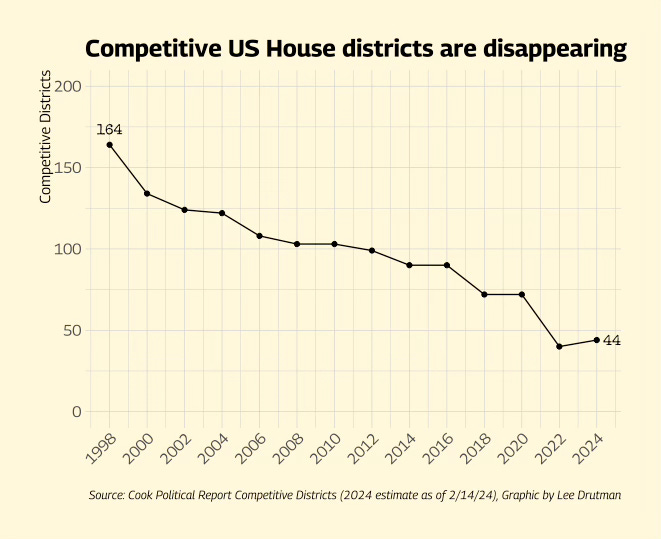
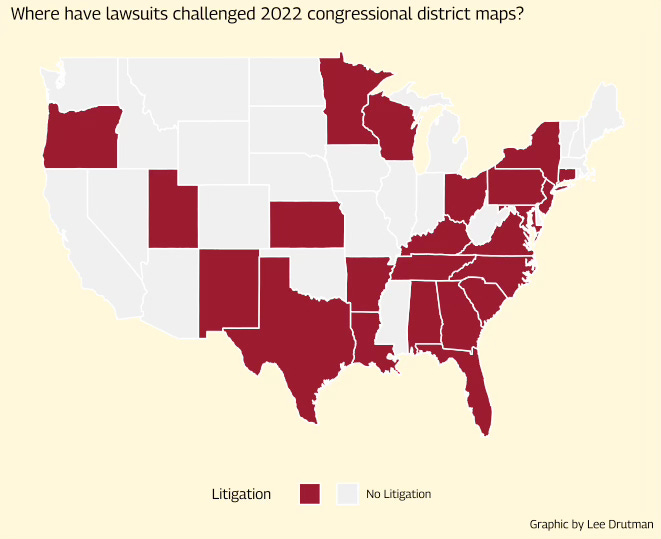
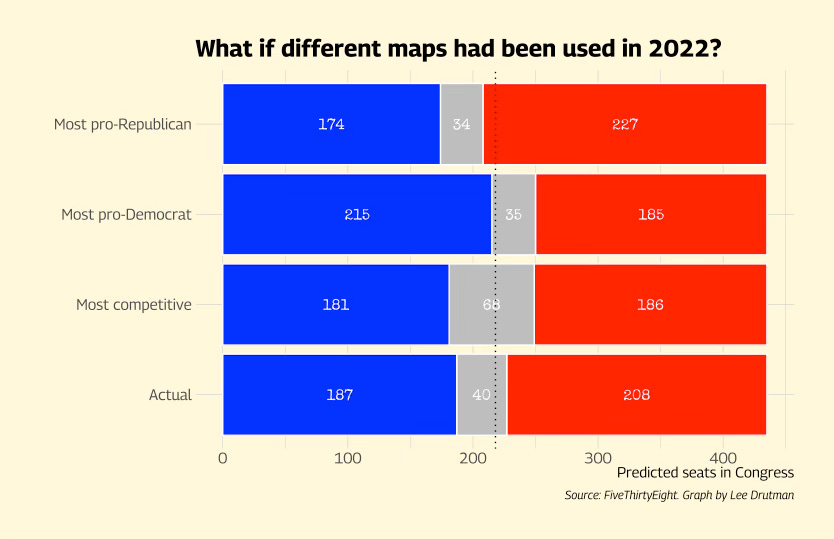

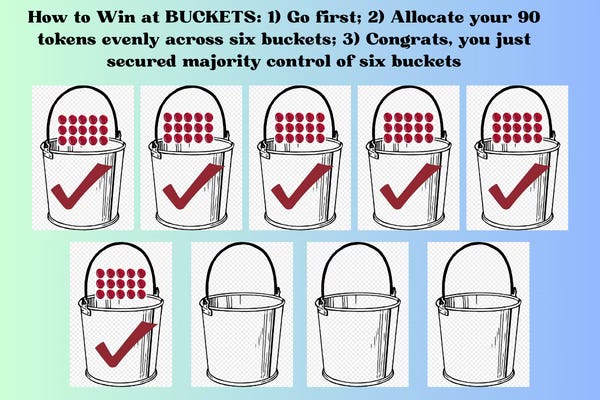
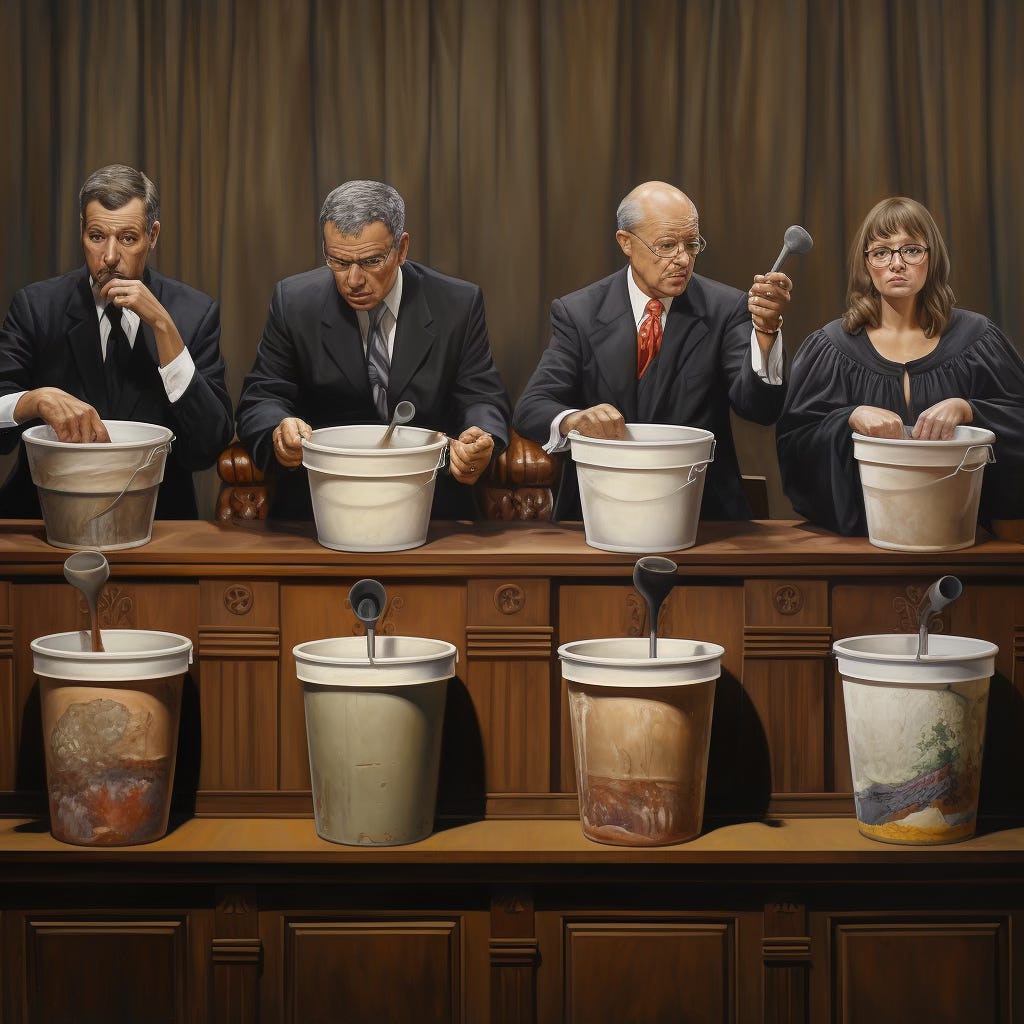

All well and good. Yes, single member districts bad and multi-districts good.
But we have had single member districts for hundreds of years and disaster did not ensue. Begs question #1: Why so bad now? When and why did it get this way?
You point to sorting by geography. Begs question #2: why did geographic sorting become so extreme?
I argue the answers to both questions are found in the downstream consequences (especially policy changes and problems ignored) of the way we fund election campaigns (especially primary ones).
- Primaries became nearly universal in 80s.
- "Being primaried" (the phenomena you have documented so well) using campaign funding to force out the moderates and install advocates, became a tool of the rich and special interests (especially the fossil fuel industry and Wall Street). Gradually during the 90s, perfected by early 2000s. Heavily used by Republican donors (though Democrats may do it too).
- Conservatives are naturally suspicious of "differences". They can't help it. It is what makes them conservative. Humans are cautious of New and Unfamiliar. Some of us just more or less than others. [See recent Scientific American article on this topic.] Religion, gender, skin color, national origin, etc. Republicans (AKA conservatives) under Gingrich found emphasizing cultural differences to be a wonderful way to raise pull campaign donation money. Fit well with language attacking the moral character of the Democrats.
- Policy followed influence of campaign money. Trash welfare with TANF. Both parties ignoring the employment and welfare consequences in mid-west and small cities of huge increases in manufacturing efficiency and, to less extent, global trade. Great Recession as we stopped regulating financial firms and then coddled the crooks. 80% of workers with inadequate access to retirement funding (and open, if foolish, talk about making Social Security & Medicare worse). Huge tax changes to make wealth/income distribution not just severely unbalanced but "in your face." Voting restrictions. And more and more.
- That led to anger and the specific geographic distribution of that anger.
Please, Mr. Drutman, put your analytical skills to work addressing these questions in light of what you have already written.
And then address a third: If the country only spent a relative pittance of $10 billion electing the 2022 Congress, why have the Democrats not adopted vigorous commitment in 2024 to completely break the power of the campaign finance stranglehold on our country? But not by promising to restrict donations. (We tried that, it doesn't work, Congress won't pass it, it won't pass muster at the Supreme Court and the voters will yawn - heard that before). Instead by proposing a campaign finance voucher program of about the same size and let the public simply out-spend the rich and special interests.
-